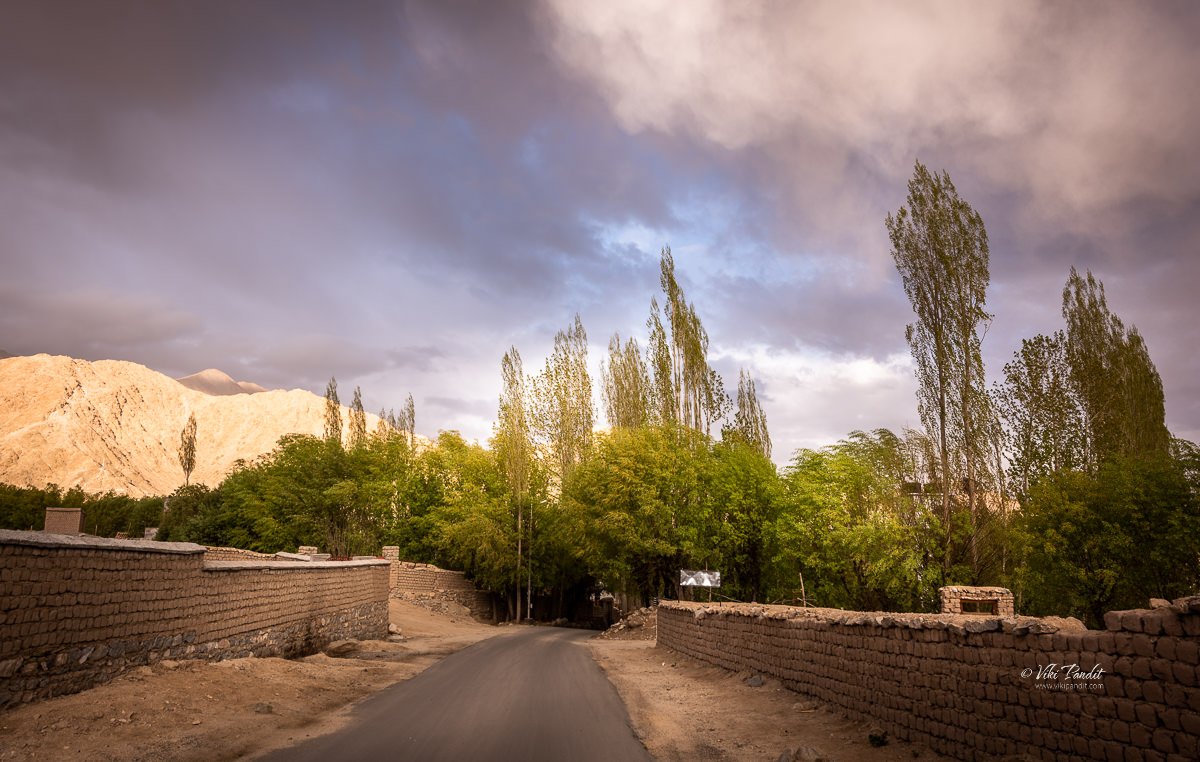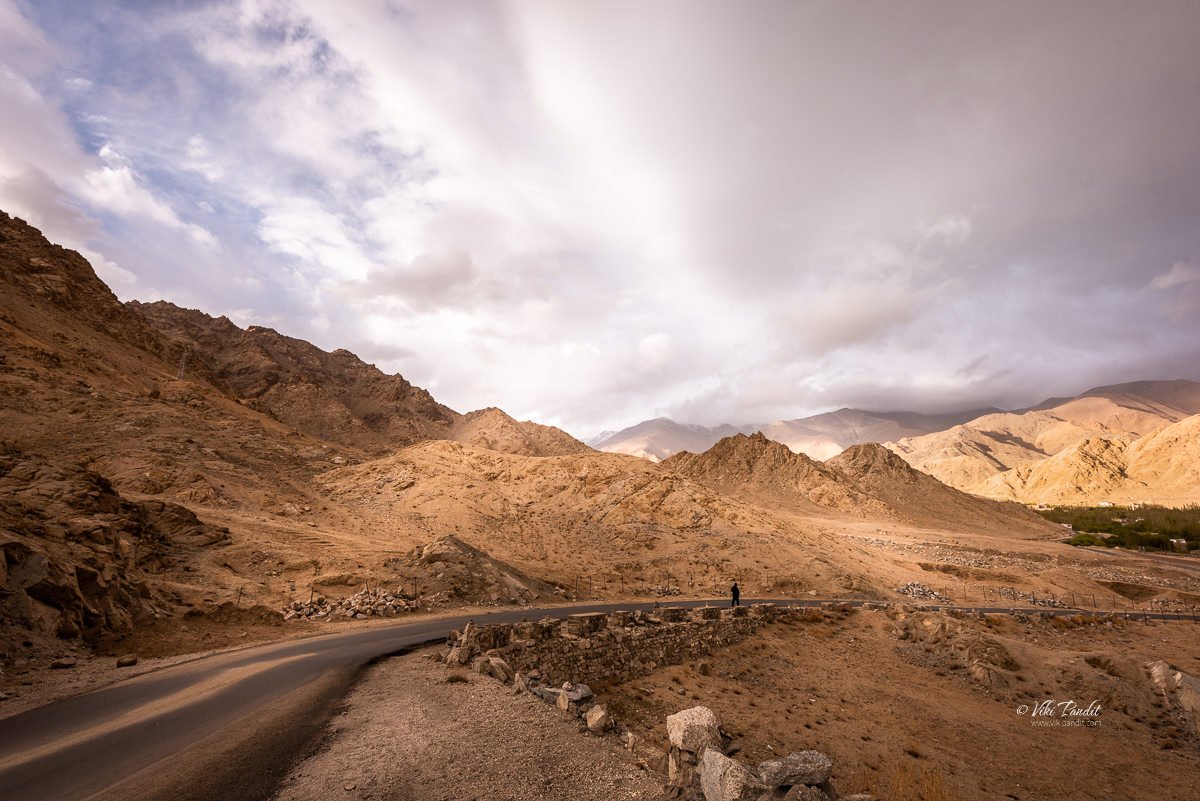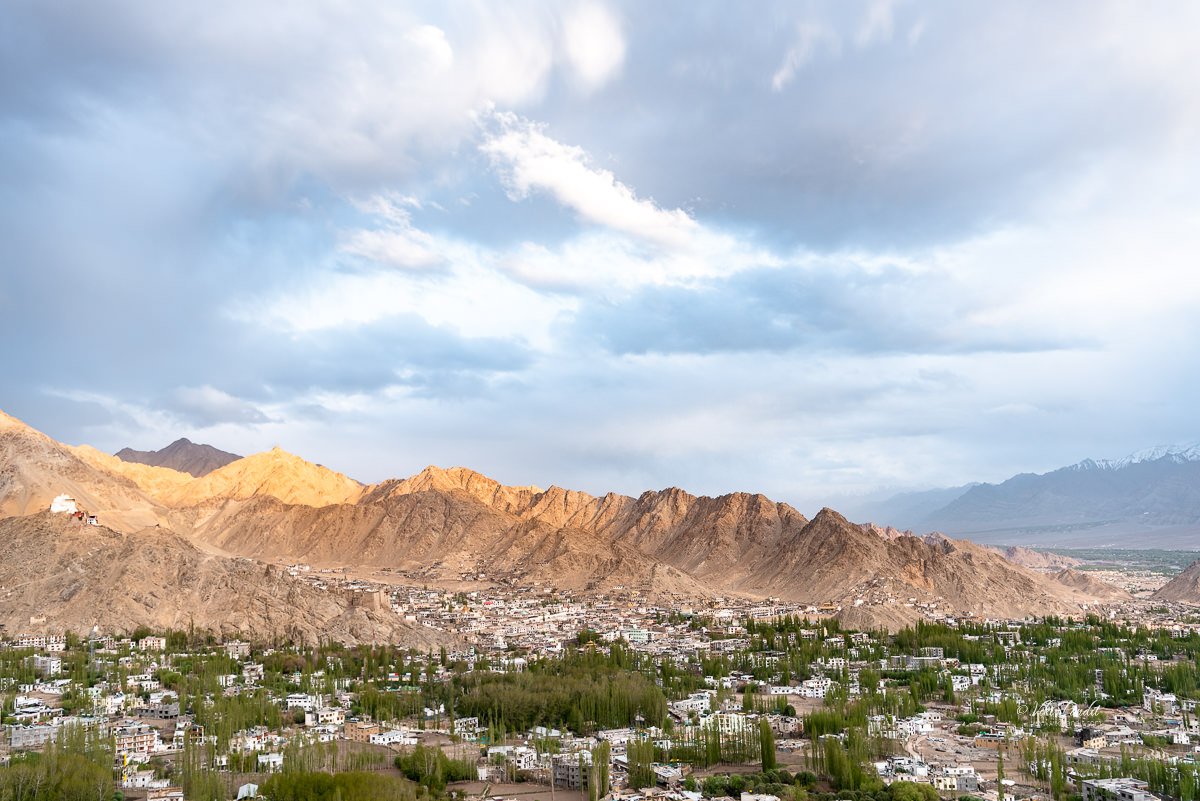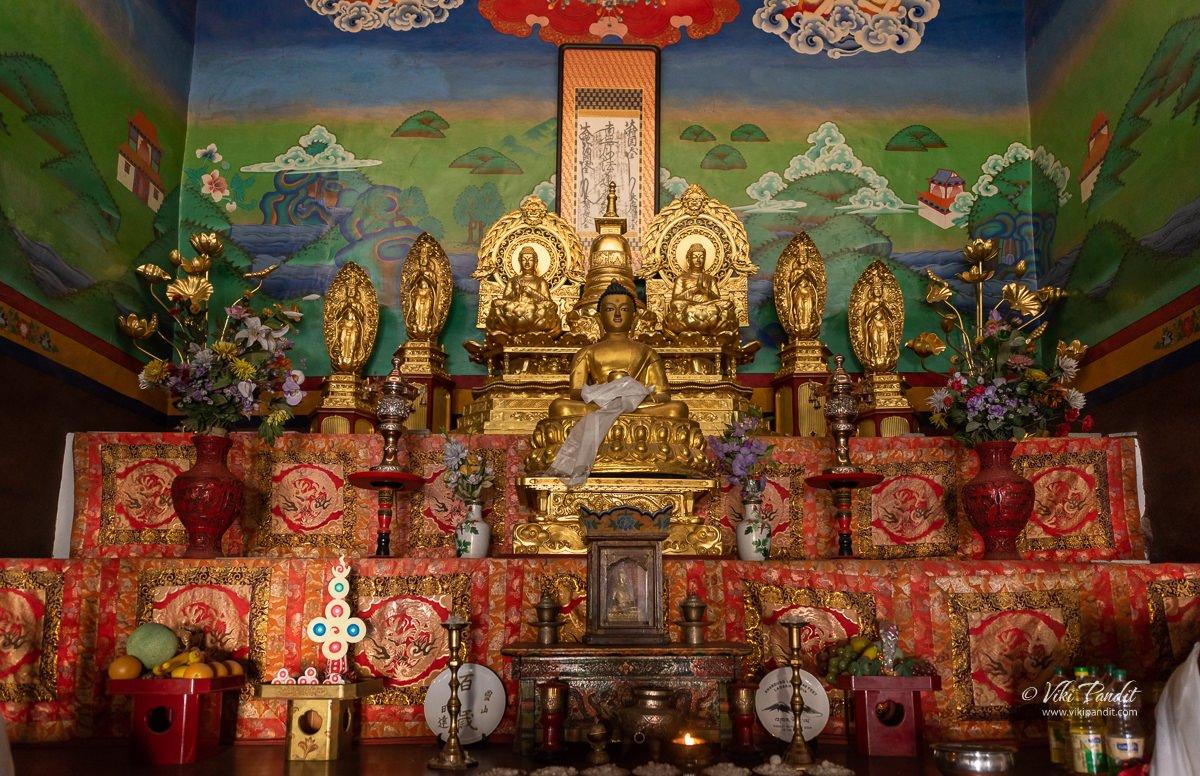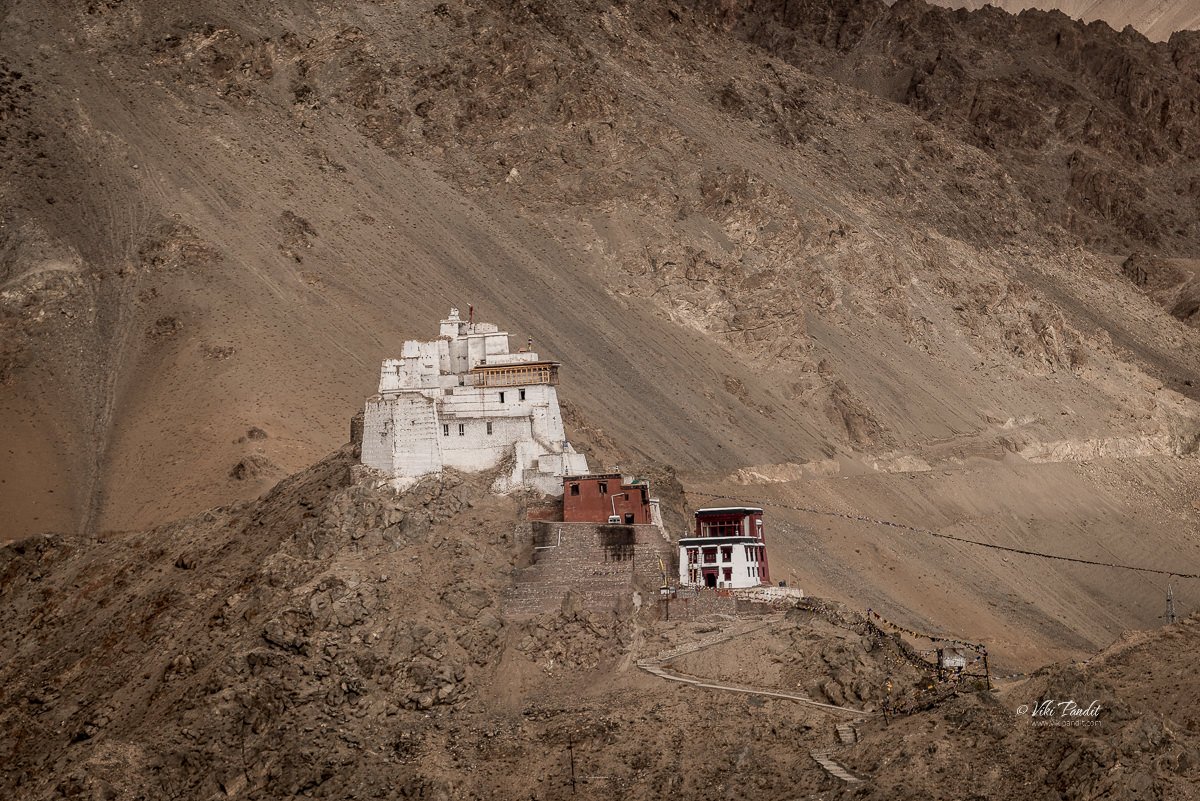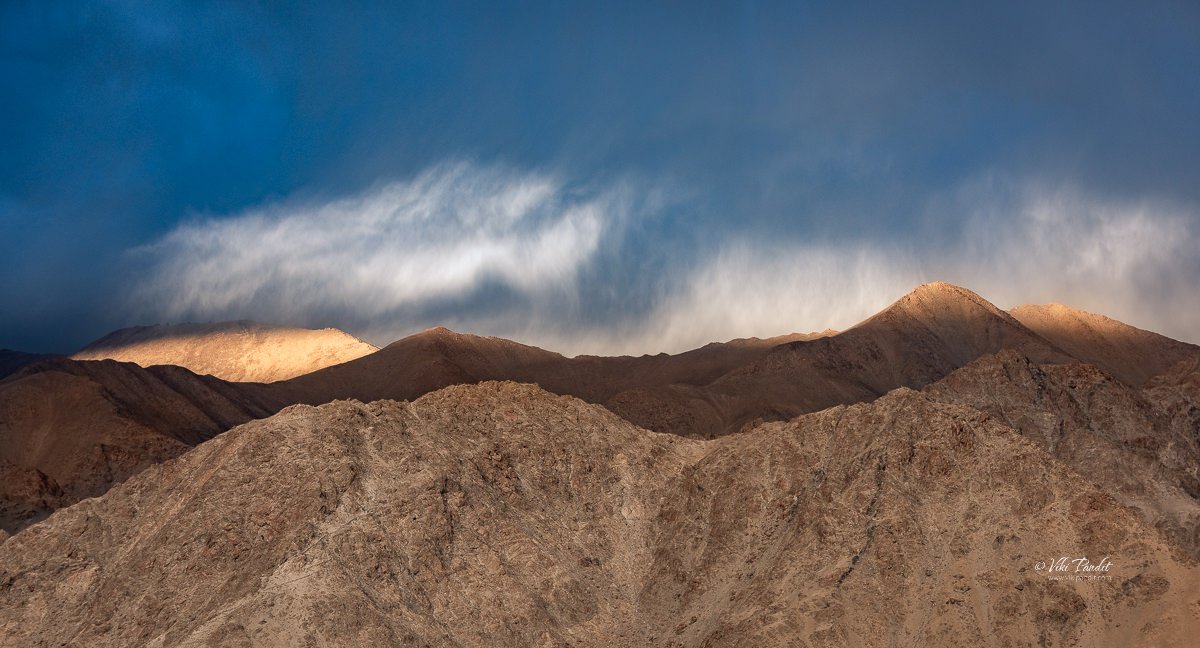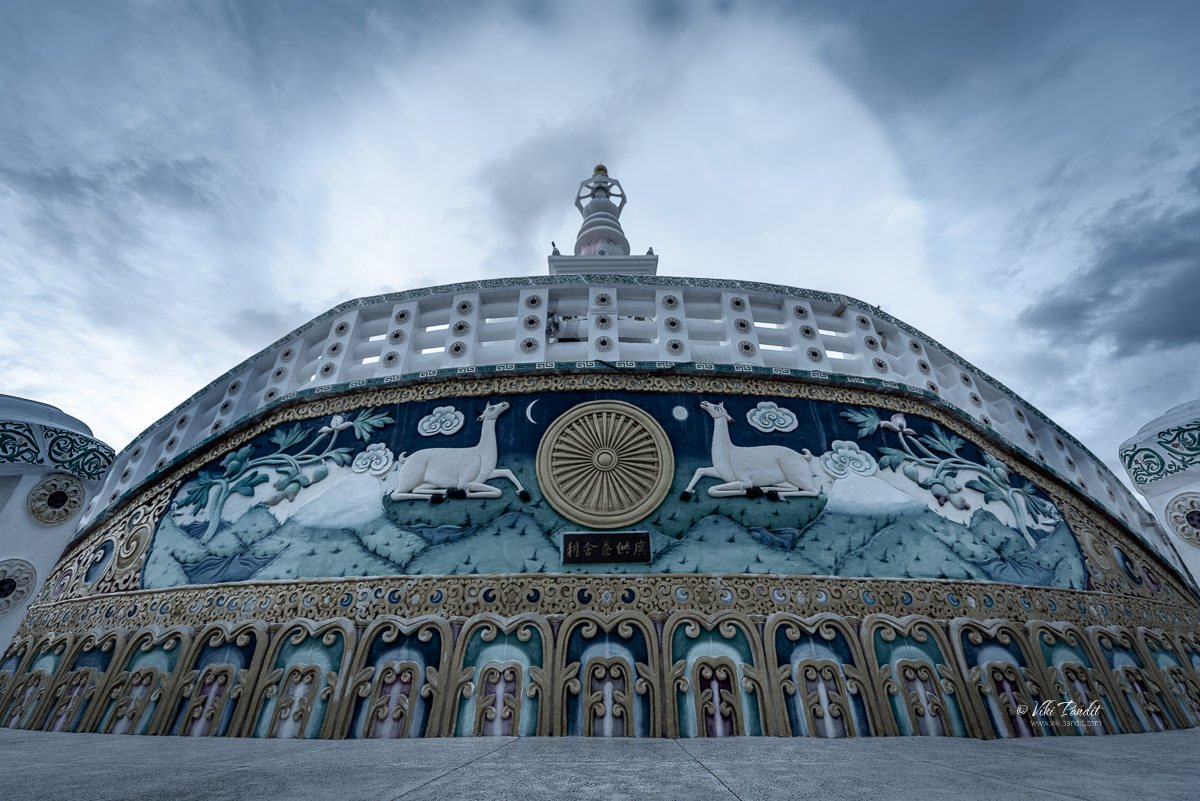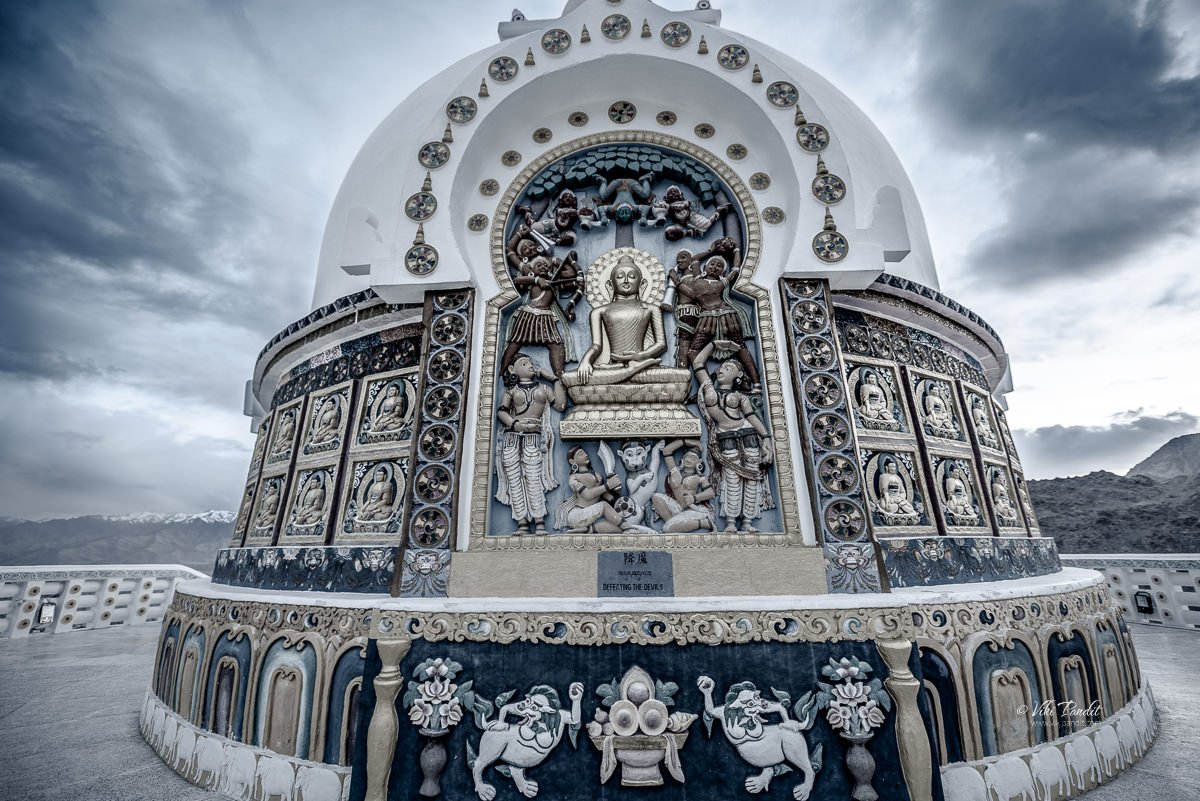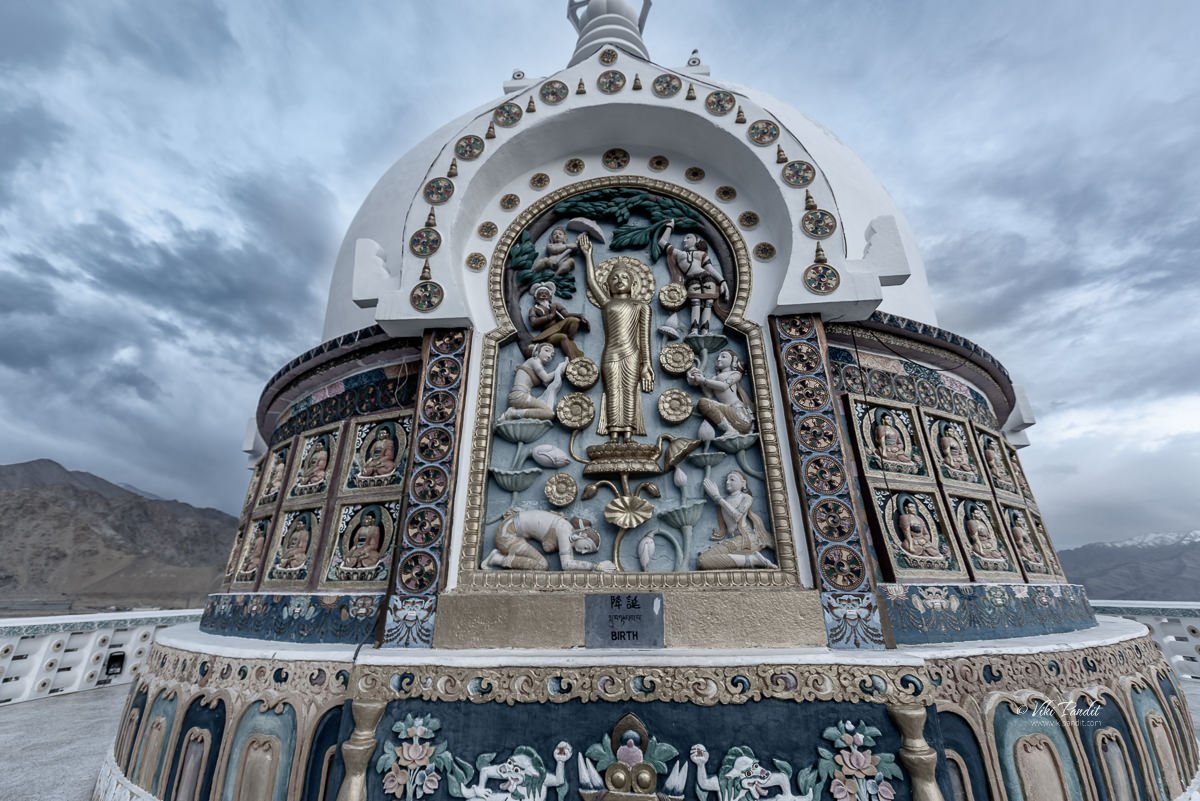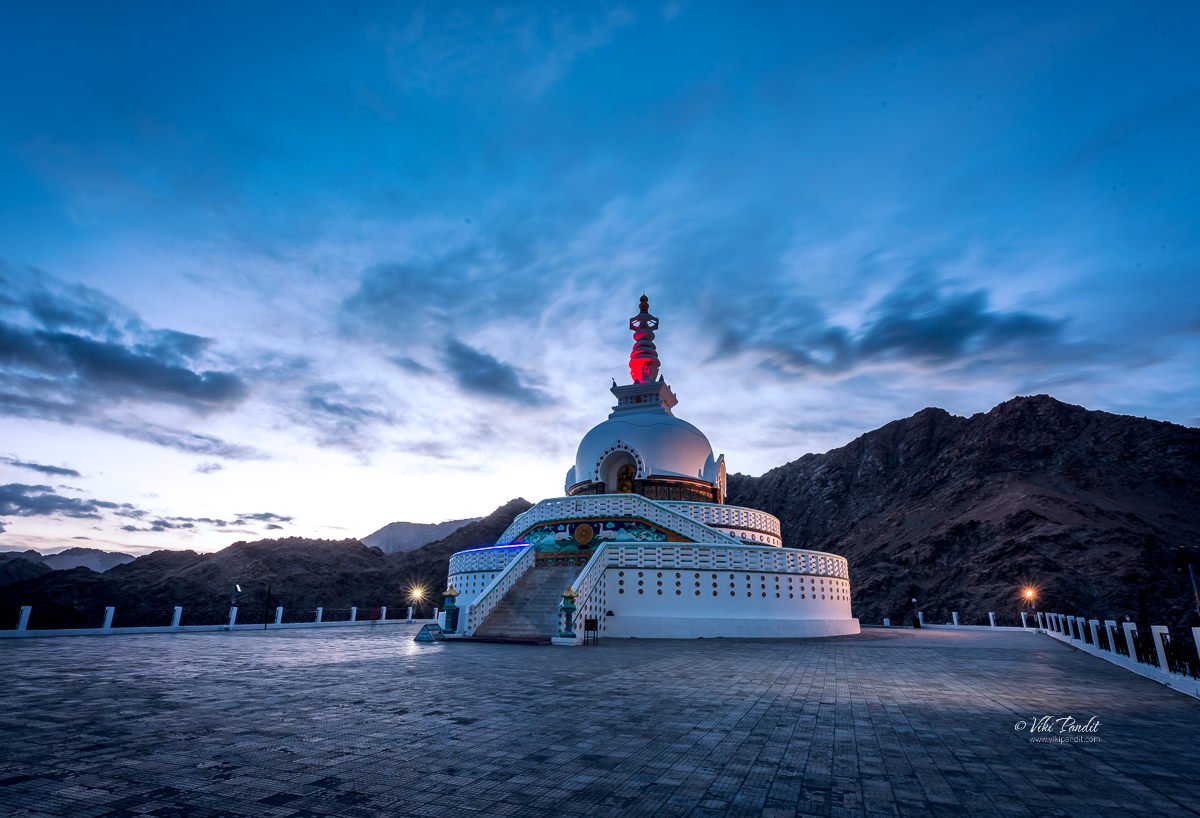The unique beauty of Ladakh lures visitors from all across the globe. The union territory is geographically located in the westernmost extension of the Tibet plateau. Its name ‘Ladakh’ literally means “the land of passes.” The capital city, Leh, hosts the only airport. During the winter months, Ladakh is completely cut off from the rest of the country.
As summer approaches, tourists queue up in hoards to lose themselves in the serenity, tranquility, and spirituality of this desolate world. Also known as “Little Tibet” the city is known for its colorful culture and rich traditions of Mahayana Buddhism that still flourishes in the purest form in this region.
Shanti Stupa is one of several must-visit destinations in Leh. Surrounded by lofty mountains it has a special place in the cultural history of Ladakh. This white-domed Stupa on a hilltop in Leh was conceived by Japanese Buddhist Bhikshu, Gyomyo Nakamura as part of the Peace Pagoda mission.
Walk to Shanti Stupa
We had spent the earlier part of the day exploring Namgyal Tsemo Gompa and Leh Palace. All the walking had left us tired. We took a brief rest at the Shaolin Guest House, and then towards early evening, left for the peace pagoda.
Shaolin Guest House lies a couple of kilometers east of the Shanti Stupa. We walked down Sankar Road and then onto the Shanti Stupa Road. The walk is not difficult but it is not recommended for tourists coming from the plains as they might experience breathlessness because of the high altitude.
It is advisable that you take the first day off and just relax. It will help your body to acclimatise to the thin air in Leh.
Midway through the walk we were greeted by the picturesque Poplar trees. With its towering height, the Poplars stand distinctly in the landscape of Leh. These Poplar trees are said to mature very quickly growing up to 8 feet in the very first year. In the barren desert with almost no vegetation, the brilliant green trees are a sight for sore eyes. On the way, we passed by many small single-floor houses, some made of bricks and some of mud. The boundary of these dwellings are marked with medium-height ash-colored brick walls.
As we reach the outskirts of the city, the road starts to go uphill and the houses gradually disappear. The evening was breezy and we didn’t feel any discomfort hiking up the hill.
The Shanti Stupa road would be the easiest way to reach the Stupa. The motorable road leads right up to the gates of the Stupa. One can also reach here by climbing near-500 steps from the opposite side of the hill but in my opinion, it is not a recommended route for the unfit.
It was 7 pm by the time we reached the entrance of the Stupa. The Sun had hid behind the mountains but the light was still great. Situated on the hilltop at Changspa at a height of 4267 meters, the Stupa provides wonderful panoramic views of the surrounding mountains.
Buddhism in Ladakh
It is said Buddhism penetrated Ladakh during the time of Emperor Ashoka in around 204 BC. But even before the reign of Ashoka, the Arhat Majhantika blessed these lands with his visit and prophesied this region becoming a stronghold for the Buddhist religion in the Himalayas. Ladakh was in those times known as Mar-yul (Red Land).
It cannot be denied however that it was during Ashoka’s reign that Buddhism spread rapidly and took a stronghold in this part of the world. The indigenous community which were mostly nomadic and lived off meat at that time, gradually absorbed the concept of vegetarianism that is still followed today.
The reign of Ashoka also introduced the religion in Japan. The teachings of Buddha aroused new consciousness in the people of Japan and thus rose Todaiji, the greatest of the Buddhist temples in the world. And this brings us to the Shanti Stupa which stands for Leh as a mark of the friendship between two countries connected by a religion of peace.
History of Shanti Stupa
The idea of Shanti Stupa has its roots in a vision conceived many years before by Nichidatsu Fujii. Nichidatsu Fujii [1885-1985] more commonly known as Guruji, was the founder of the Buddhist religious order, Nipponzan Myohoji, which is dedicated to working for world peace through Peace Walks and the construction of Peace Pagodas across the world.
Around 1842, repeated invasions of Ladakh by the Kashmiri rulers shook Buddhism at its roots. Led by Maharaj Gulab Singh, the Dogra rulers undermined the aristocracy of Ladakh and brought about what is regarded as the darkest hour in the history of Buddhism in Ladakh. Alien to the local culture, they did considerable damage to the gompas and the stupas in the region. As a part of his mission to resurrect Buddhism back in Ladakh Bhikshu Gyomyo Nakamura conceived the idea of building the Shanti Stupa in Leh.
Shanti Stupa in Leh
Construction of the Shanti Stupa began in April 1983 under the supervision of Bhikshu Gyomyo Nakamura and Kushok Bakula, a lama from Ladakh. The project was built with the help of Ladakhi Buddhists, who offered voluntary labor, and Japanese Buddhists, who consider India as the “sacred” birthplace of the Buddha.
The Shanti Stupa holds the relics of the Buddha at its base, enshrined by the 14th Dalai Lama. The 14th and current Dalai Lama, Tenzin Gyatso inaugurated the Shanti Stupa in August 1991 celebrating 2500 years of Buddhism.
The beautiful Stupa today stands as a symbol of the friendly ties between the people of Japan and India. Since its inauguration, Shanti Stupa has become a popular tourist attraction. The Stupa overlooks the city of Leh, providing panoramic views of the city, the village of Changspa, Namgyal Tsemo in the distance, and the surrounding mountains.
Depictions of Buddha at Shanti Stupa
We waited for the dusk to arrive hoping the tourists would clear by then. Far away we could see the sun set over the lovely city of Leh. Mountains are the crowning glory of the region, as they stand tall, overpowering, and majestic in myriad colors.
The Shanti Stupa features a photograph of the current Dalai Lama with the relics of the Buddha at its base. The Stupa is built as a two-level structure. The first level features the central relief of Dharmachakra with deer on each side.
As we move up the stairs we face the central structure that features an image of Lord Buddha in golden color sitting on a platform turning the Dharmchakra wheel.
On the same level, as you walk around the circular path, we can find three other images depicting the birth of Buddha, the defeating of devils in meditation and the death of Buddha along with many small images of meditating Buddha, embossed in vibrant colors.
Both levels feature a series of smaller meditating Buddha reliefs along the walls of the central structure.
And the most important of all the Nirvana tablet that features the Buddha lying on his right side with his head supported by a pillow or his propped-up hand and elbow. Though this representation of the Buddha can indicate sleeping or resting, it is most commonly a representation of the final moments at the end of the life of the Buddha.
Parinirvana is a Mahayana Buddhist festival that marks the death of the Buddha.
Called maha parinirvana, this transitional state occurs only to those who have reached enlightenment, or nirvana, during their lifetime. Those who achieve nirvana are released from samsara, the cycle of rebirth, and karma. Instead, when they die, they reach nirvana-after-death or the eternal Self. It is also known as Nirvana Day and is celebrated on February 15th. Buddhists celebrate the death of the Buddha because they believe that having attained Enlightenment, he achieved freedom from physical existence and its sufferings.
Evening at Shanti Stupa
Dusk was upon us and the lights along the Stupa were gradually lighting up one by one. The crowd had dispersed by the evening, allowing for a more tranquil experience in this remote yet captivating locale. The white-colored domed-shaped structure looked extremely beautiful during the night when it was illuminated.
It was dark soon and the sky was lit with a billion stars. The moon was nowhere to be seen even though the Amavasya (New Moon) had passed a couple of days back. On the way downhill a cafe was still open where we gathered some warmth with a hot tea and a bag of chips. It was late and we were the only guests at the dimly lit cafe.
The walk downhill was relatively easy. Although by that time it was pitch dark. The area is devoid of any street lights. Holding hands and armed with a torch we slowly made our way back to the Hotel. It was a walk that I will always remember.
In 1974, when Ladakh was first opened for tourism, around 400 to 500 tourists used to visit a year, and with time the numbers rose every year. Today in 2018, around 6 to 7 Lakh tourists visit Ladakh every year. Tourism can be a double-edged sword. It can bring economic benefits but can also harm the environment and local communities. As a tourist, we must try to respect the local culture and not be disruptive to the environment.
Our upcoming schedule takes us to Nubra valley where if I am fortunate, I look forward to capturing some nice dunes. Your interest and interaction are incredibly valuable to me. Feel free to share your thoughts, comments, or questions – I would love to hear from you.
Visitor Information
The Stupa is open for tourists between 5:00 a.m. and 9:00 p.m
The Stupa can be reached by a drivable road or on foot using a series of 500 steep steps to the hilltop.
The most popular ladakhi foods are Thukpa (noodle soup) and Tsingmo (steamed buns).
When in Ladakh also enjoy the buckthorn juice which is indigenous to the union territory
Tibetan Kitchen and Gesmo are two of my favorite restaurants in Leh. If you are up for a coffee, you must try Lehvenda in the main market area. It is amazing.
